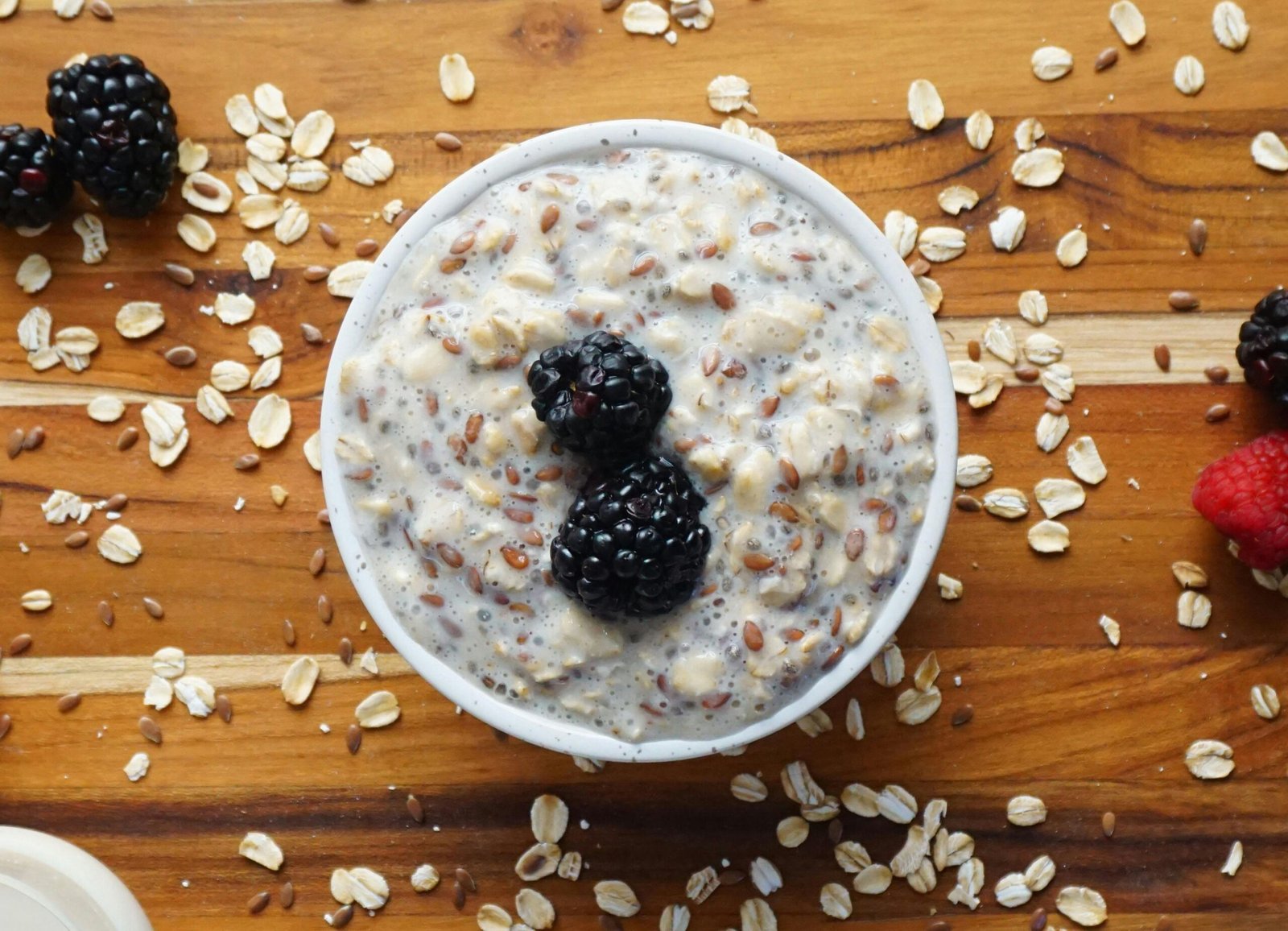🌟 Does your body get what it deserves?
I myself have tried various diets throughout my life – and somehow, nothing ever truly fit. There was a phase in my life where I had to demand a lot from my body: maximum energy, absolute readiness to perform, robust health, and mental fitness. It was precisely during this phase that I came across the ketogenic diet – and indeed, never before had I felt so physically and mentally fit and capable.
What was particularly positive for me were the pure foods: lots of fresh herbs, salads, nuts, and especially the complete avoidance of granulated sugar. But as an absolute ice cream lover – surviving a summer without ice cream? No chance! So I started making my own sugar-free ice cream. With full enjoyment, no compromises!
However, Keto also brought challenges: absolute discipline and strict meal pre-planning – especially when you’re on the go a lot and rely on several snacks in between meals. Plus, I really enjoy having an apple, a banana, or other fruit as a snack. So I fundamentally asked myself: Hey, what does my body really need to keep my organs healthy, without being too strict, and still allow me to live my life well and healthily? Which nutrients support my organs, and which foods could positively influence my cycle? From the well-founded knowledge of the Keto diet and targeted nutrient insights, I finally developed my own easy recipes: delicious, balanced, and uncomplicated.
What “easy cooking” means to me might be individually different. That’s why I warmly invite you to check out my YouTube and community channels. There you’ll find practical step-by-step cooking instructions and videos that allow you to cook along with me and discover your own path to a healthy, simple, and nutrient-rich diet.
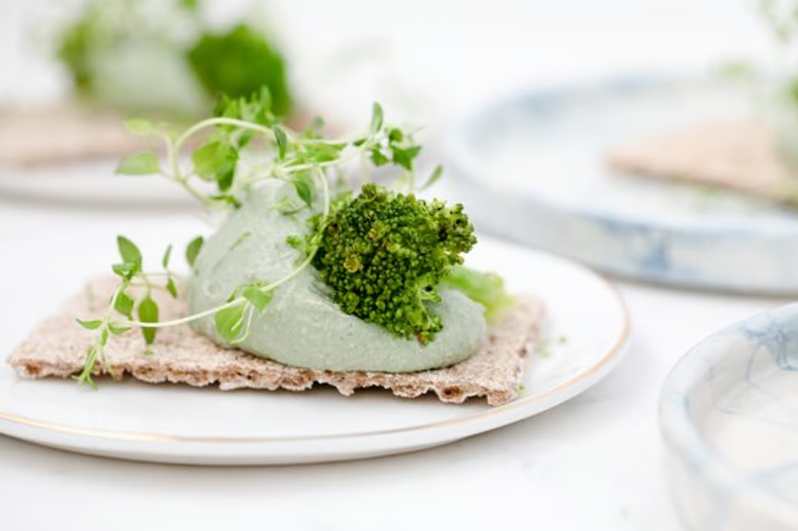

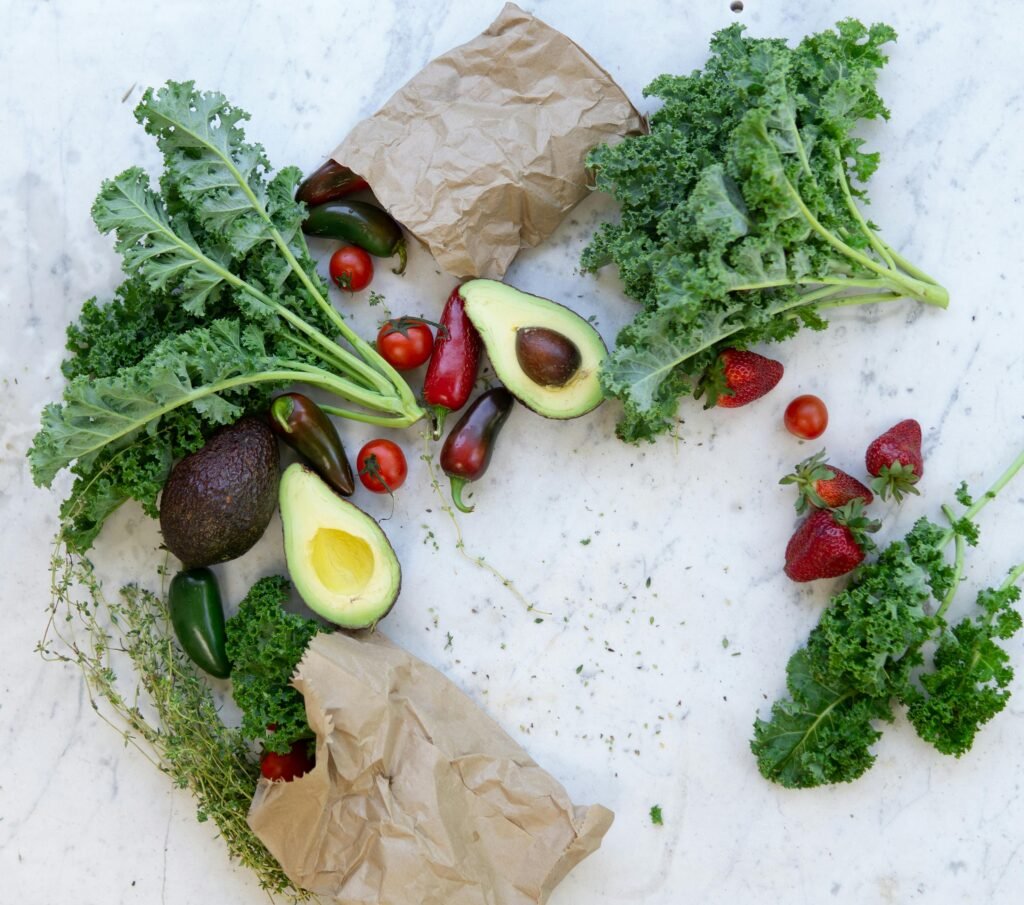
1. Definition of Clean Eating
Clean Eating is a holistic nutrition concept that has been gaining more and more followers worldwide for several years. It is based on a simple but effective core idea: to consume foods in their most natural, unprocessed form and largely avoid artificial additives.
What exactly does “Clean Eating” mean?
The roots of “Clean Eating” trace back to the movement of the 1960s, when people increasingly turned against industrial food production and artificial additives. In the last 10 years, this dietary method has experienced a real boom, reinforced by growing health awareness and the search for authentic, natural food.
Global Development and Significance of Clean Eating – Latest Studies and Figures (2023/2024)
The popularity of Clean Eating is continuously increasing worldwide; especially in Europe and the USA, the nutrition concept is now firmly established and continues to gain importance.
According to current data from Nielsen (2024), approximately 59% of consumers worldwide are now consciously striving to buy the most unprocessed and natural foods possible. This represents a 5% increase compared to 2022. At the same time, the same Nielsen study shows that approximately 41% of global consumers now consistently avoid artificial additives in food, which also represents a significant increase compared to previous years (Source: Nielsen Global Health and Wellness Report, 2024).
In Germany, the latest BMEL Nutrition Report 2024 impressively confirms this international trend: Approximately 91% of Germans state that healthy eating is particularly important to them. Of these, 71% make sure to consume fresh fruits and vegetables daily. Additionally, the report shows that about 76% of consumers in Germany now consciously prefer foods with the shortest possible ingredient lists, and approximately 68% specifically avoid artificial additives and flavor enhancers (Source: BMEL Nutrition Report, 2024).
This development is also clearly reflected in Austria. A comprehensive survey by the Federal Ministry of Agriculture, Forestry, Regions and Water Management (2024) revealed that 68% of the population now prefer fresh, regional, and unprocessed foods. This figure clearly illustrates a growing awareness of sustainable, regional nutrition and the avoidance of industrially processed foods.
The Clean Eating trend also continues in Switzerland. According to a current study by the Federal Statistical Office (2023), 6% of the population now eat completely meat-free, and a total of about 64% of the Swiss population state that they consciously prefer natural foods and avoid convenience products. These results clearly show that the Swiss population is increasingly aligning its diet with the principles of Clean Eating.
These current study results from 2023 and 2024 confirm that Clean Eating is not merely a short-lived trend, but a sustainable and widespread way of eating.
Benefits of a Natural Diet
Why is a natural diet so popular, and why are more and more people consciously choosing it? The answer is simple: This form of nutrition ideally combines health, enjoyment, and sustainability. Here, I want to introduce you to the most important benefits that I personally experience daily:
📎 More energy and vitality in everyday life
Industrially processed foods often contain additives, refined sugar, and fats that stimulate our bodies in the short term but burden and exhaust them in the long term. Natural, fresh foods, on the other hand, provide your body with high-quality nutrients, dietary fiber, vitamins, and minerals that ensure a sustainable and consistent energy supply. The result:
- stable energy levels throughout the day
- less fatigue and performance dips after meals
- increased physical and mental performance
📎 Optimal supply of important nutrients
A natural diet is based on fresh ingredients that are particularly nutrient-rich in their original form. Through clever combinations, the body can be specifically supplied with exactly the vitamins and minerals it truly needs. Benefits include:
- better digestion and gut health
- Strengthening the immune system
- more balanced hormone levels, especially for women during their cycle



📎 Improved Overall Health
Regular consumption of unprocessed foods demonstrably lowers the risk of lifestyle diseases such as diabetes, high blood pressure, or cardiovascular diseases. Furthermore, a natural diet supports a healthy body weight and helps reduce cravings.
📎 Fewer Additives – more natural flavor
Industrial processed products often contain artificial flavors, flavor enhancers, and preservatives that strongly influence the natural sense of taste. Natural eating, on the other hand, re-educates the palate and sensitizes it to the intense and genuine taste of fresh ingredients. It is observed that flavors are perceived much more intensely again.
📎 Better Skin, Hair, and Nails
What is supplied to the body is also reflected externally. A natural, nutrient-rich diet can improve skin appearance, strengthen hair structure, and ensure stronger nails. The reason for this is especially the high-quality fats, antioxidants, and vitamins that are abundantly present in natural foods.
📎 Positive effect on environment and sustainability
A diet that relies on regional, seasonal, and natural ingredients conserves resources and reduces transport distances and packaging waste.
Challenges during the transition: Biochemical processes in the body
The transition from a sugar-rich diet to a natural, low-sugar diet initially poses a significant challenge for the body. The biochemical processes in the body are particularly crucial here. What exactly happens when the consumption of granulated sugar (sucrose) and added sugars is reduced, and instead, there’s an increased focus on fruit sugar (fructose from natural sources) and other more complex carbohydrates?
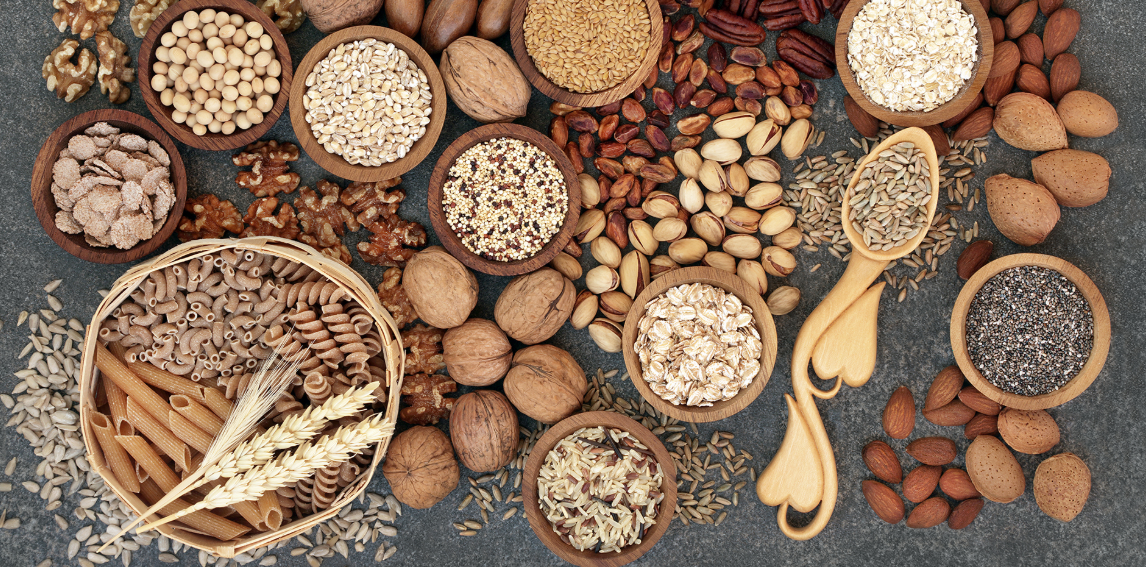
What exactly are long-chain and short-chain carbohydrates?
Carbohydrates are not inherently bad – quite the opposite. They are an important energy source for our body. However, it is crucial to understand that there are different types of carbohydrates, namely long-chain (complex) and short-chain (simple) carbohydrates. These differ significantly in the way and speed at which they are processed in our body:
Short-Chain carbohydrates (simple sugars)
Short-chain carbohydrates consist of one or a few sugar molecules and are rapidly digested and absorbed. This provides quick energy in the short term but causes significant fluctuations in blood sugar levels. These strong fluctuations often lead to performance dips, cravings, and long-term health disadvantages.
Examples of short-chain carbohydrates:
- Granulated Sugar (Sucrose)
- Grape Sugar (Glucose)
- Foods containing household sugar (sweets, pastries, sweetened beverages)
Long-Chain carbohydrates (complex carbohydrates)
Long-chain carbohydrates consist of many sugar molecules that are slowly digested and gradually absorbed. This results in a slower, more even rise in blood sugar levels, ensuring a constant and sustainable energy release in the body.
Examples of long-chain carbohydrates:
- Whole grain products (e.g., whole grain rice, whole grain pasta, oats)
- Vegetables and legumes (e.g., broccoli, carrots, lentils, beans)
- Nuts and seeds
Which carbohydrates are optimal?
Within a natural diet, there is a conscious increased focus on long-chain carbohydrates. They provide the body with long-term and consistent energy, improve mental performance, promote gut health, and help avoid cravings.
Therefore, it makes sense to specifically prefer long-chain carbohydrates and consciously reduce or largely avoid short-chain sugars and refined carbohydrates (such as white flour products).
The sugar transition process – what happens in the body?



If the body is accustomed to regularly receiving granulated sugar or other rapidly usable carbohydrates, it reacts with a strong insulin release. These insulin spikes provide quick energy in the short term but often lead to subsequent performance dips and cravings. Granulated sugar and refined carbohydrates have a strong stimulating effect on the brain’s reward center, which can long-term create a real craving and even a certain dependence.
When transitioning to a natural diet, this rapidly digestible sugar (sucrose) is largely replaced by natural sugar sources, especially fruit sugar from fresh fruit, as well as complex carbohydrates from vegetables, legumes, and whole grain products. These are digested and processed significantly slower, which biochemically brings the following advantages:
📎 Stabilization of blood sugar levels
Natural sugar sources and complex carbohydrates are converted into glucose more slowly. This causes blood sugar levels to rise slowly and steadily, leading to a constant and sustainable energy supply. Insulin release remains moderate, and the body experiences fewer drastic energy fluctuations and cravings.
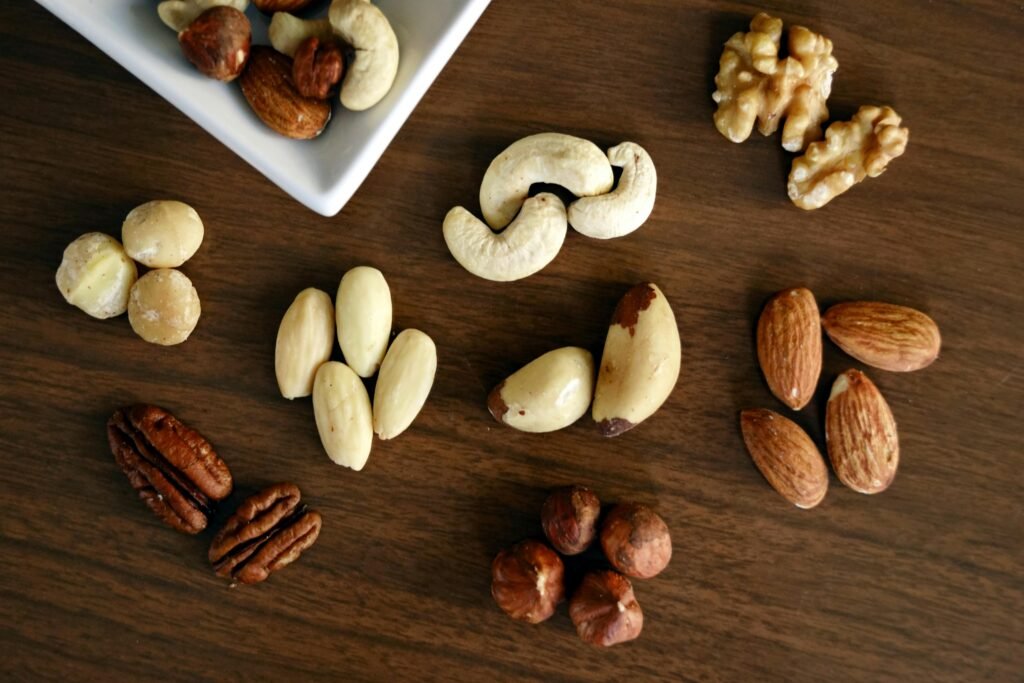

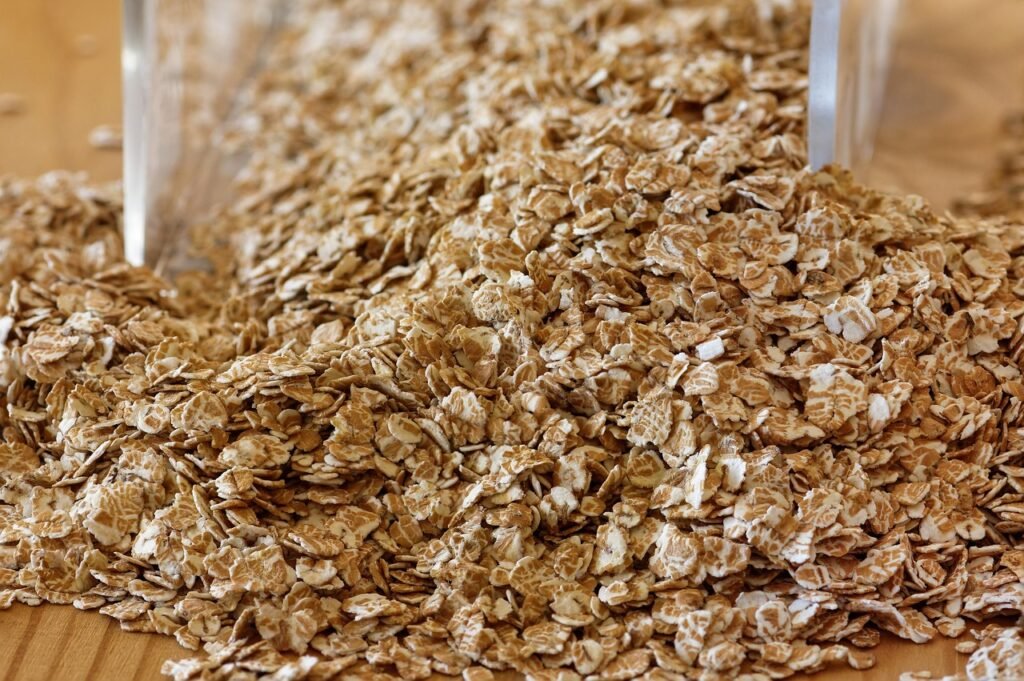
📎 Change in metabolism – Increased fat burning
By reducing granulated sugar, the body gradually learns to draw more energy from fat reserves and stored energy carriers. The metabolism adapts and increasingly uses fats and complex carbohydrates for energy production, which can long-term lead to a more stable energy balance and improved fat burning.
📎 Positive effects on brain and concentration
Fruit sugar from natural sources and complex carbohydrates ensure a constant and stable energy supply for the brain. The body experiences fewer fluctuations in the brain’s energy supply. This promotes mental performance, concentration, and clarity, and significantly reduces symptoms such as fatigue or concentration difficulties often associated with fast sugars.
📎 Changes in gut flora
The switch from refined sugar to natural foods positively influences the gut flora. Studies show that a diet with a lower proportion of refined sugar and instead with natural sugar sources from fruits, vegetables, and whole grain products promotes the growth of “good” gut bacteria. A healthy gut flora not only supports better digestion but also strengthens the immune system and overall health.
Initial Difficulties – Biochemical Explanation
In the first few days of the transition, typical adjustment symptoms such as fatigue, headaches, or irritability may indeed become noticeable. The reason for this is the body’s adaptation to a new type of energy supply. The body is accustomed to immediately providing quick sugar for energy. During this adaptation phase, it must first learn to utilize the slower and more sustainable sources more efficiently. However, these symptoms usually disappear after a few days, once the metabolism has adjusted.
Long-Term positive adaptation
After successfully adapting to the new diet, the body experiences noticeably more and, above all, more consistent energy. Performance sustainably increases, mental clarity improves, and overall well-being significantly rises. Biochemically speaking, energy metabolism now runs more efficiently and healthily, which brings significant long-term benefits for the heart, brain, muscles, bones, and nervous system.

Simple Implementation – from the Perspective of Body Biochemistry
Small Step-by-Step Guide
To optimally enable the body’s transition to a natural diet, it is important to approach the change gradually and consciously. The following steps are specifically oriented towards your body’s biochemical needs to ideally support the positive health effects.
Step 1: Reduction of Simple Sugars and Refined Carbohydrates
Biochemically speaking, the body benefits most from the reduction of simple (short-chain) sugars and refined carbohydrates, as these cause insulin spikes and can long-term lead to inflammation, cravings, and energy deficits.
Ideal implementation:
- Gradual reduction of sugar in beverages, sweets, processed foods, and white flour products.
- Consciously read food labels to identify hidden sugar.
Step 2: Replacement with complex, long-chain carbohydrates
Simple sugars are replaced by complex, long-chain carbohydrates. These are slowly broken down into glucose in the intestine, ensuring stable blood sugar levels and thus long-lasting energy and satiety.
Ideal implementation:
- Choice of whole grain products (oats, whole grain rice, quinoa).
- Integration of fiber-rich vegetables (broccoli, carrots, cabbage, spinach).
- Reaching for legumes like lentils, beans, or chickpeas.
Step 3: Increase high-quality proteins
Proteins are essential for cell regeneration, muscle building, and hormonal balance. They also increase satiety and support metabolism, especially during the sugar transition.
Ideal implementation:
- Incorporating daily high-quality proteins into meals, e.g., eggs, lean meat, fish, plant-based protein sources like legumes, nuts, and seeds.
- ensure sufficient protein intake in the morning to reduce cravings and energy dips.
Step 4: Consciously incorporate high-quality fats
Natural fats are essential for cell membranes, hormone production, and the optimal absorption of fat-soluble vitamins (A, D, E, K). Especially omega-3 fatty acids have anti-inflammatory effects and support heart and brain health.
Ideal implementation:
- Targeted selection of healthy fat sources: avocado, olive oil, flax seeds, chia seeds, fatty fish (salmon, mackerel), nuts, and seeds.
- Integration of small daily amounts of high-quality oils and fats to enhance meals and optimally support biochemical processes.
Step 5: Targeted use of natural micronutrient sources
Vitamins, minerals, and phytochemicals are biochemically crucial for immune function, metabolic processes, and cell protection. These are optimally obtained from fresh, natural foods.
Ideal implementation:
- A colorful diet (vegetables and fruits in different colors contain diverse phytochemicals).
- Use of daily fresh herbs (e.g., parsley, basil, rosemary) that are rich in antioxidants and minerals.
- Prefer foods with high nutrient density like berries, broccoli, kale, bell peppers, and citrus fruits.
👉 Extra Tip: Blog article nutrients smartly assigned
Here you will get many tips and tricks on how to quickly and easily assign the optimal nutrients for your phase of life. Have fun diving in.
Step 6: Optimize hydration
Sufficient fluid intake is absolutely important to optimally support biochemical processes such as metabolism, detoxification, and digestion. Fluid deficiency inhibits performance and significantly reduces energy metabolism.
Ideal implementation:
- drink at least 1.5 to 2 liters of water daily
- Herbal teas and infused water (e.g., water with lemon, cucumber, mint) help to optimize fluid balance in a tasty and natural way.
👉 Extra Tip: 10 different waters to prepare yourself quickly.
Step 7: Meal Rhythm
When the body is supplied with high-quality and natural foods, one quickly notices that a natural feeling of hunger and satiety becomes clearer again. Biochemically, complex carbohydrates, high-quality proteins, and healthy fats lead to longer satiety and a more stable energy balance. The body automatically requires fewer and smaller meals as a result.
Important to note:
The process of biochemical adaptation requires some time and patience. The body undergoes important changes that will significantly improve health, energy levels, and overall well-being in the long term. These steps should be approached consciously and mindfully so that the positive effects are noticeable.
My personal implementation: Back to Basic
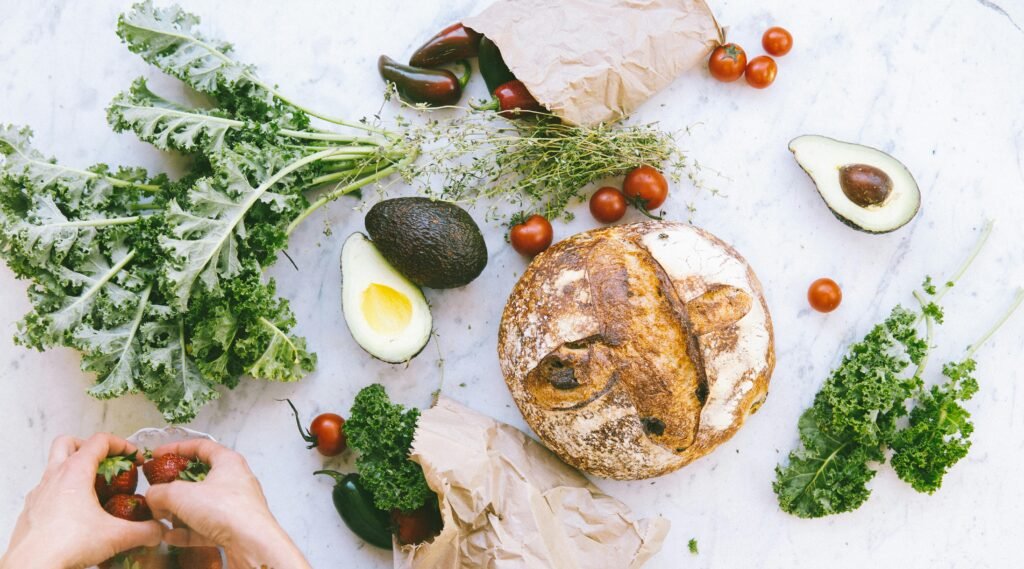


In my own kitchen, I combine classic Clean Eating with an everyday-oriented, pragmatic approach, which I affectionately call “Back to Basic”. For me, this specifically means:
- natural ingredients that offer maximum taste and nutrients.
- Simple and quick preparation, without lengthy recipes or complicated instructions.
- Targeted combination of ingredients based on their nutrients, using clear nutrient tables, to ensure optimal nutrition for myself and my family.
This allows me to always prepare fresh, nutrient-rich, and delicious meals that benefit all of us, even in a hectic daily routine.
Practical recipe examples for everyday life – individually adapted for sports and cycle (women)
The right nutrition depends heavily on daily routine, physical activities, and individual needs. The following recipes are equally suitable for everyone. Since women can also consider cycle-related changes, some recommendations are specifically tailored to this.
🥒 Breakfast variations – with or without sports
📎Without sports (light activity or office day):
Gurke & Walnüsse (alternativ Mandeln, Haselnüsse etc.): 1 Person
Ingredients:
- Fresh cucumber slices (or alternatively carrots, kohlrabi)
- Handful of nuts (approx. 20–30 g)
Why ideal?
- Nuts provide healthy omega-3 fatty acids and plant-based proteins.
- Vegetables provide dietary fiber, vitamins, and antioxidants.
- Low carbohydrate content ensures stable blood sugar and mental clarity.
📎Before strength training (higher intensity):
Oatmeal Breakfast: 1 Person
- 60 g rolled oats (preferably whole grain, gluten-free if necessary)
- 250 ml plant-based milk (e.g., oat or almond milk, unsweetened)
- 1 ripe banana
- 1 handful of berries (fresh or frozen, e.g., blueberries or raspberries)
- 1 tbsp almond butter or nut butter of choice
- 1 tsp flax seeds or chia seeds
- optional: 1 tsp honey or maple syrup, cinnamon, vanilla
Why ideal?
- Complex Carbohydrates (Oatmeal): Provide you with constant energy for intense training.
- Fructose & Antioxidants (Berries + Banana): Quickly available energy plus cell protection.
- Nuts & Seeds: Provide high-quality fats and some plant-based protein.
- Dietary Fiber: Satiating, gut-friendly, and stabilizes blood sugar.
🍗 Lunch – Meat or Plant-Based Alternative with Vegetables (Considering the Female Cycle)
📎 Cycle-Adapted Lunch (ideal during menstruation – specifically for women):
Beef Strips with Spinach and Broccoli (or Lentil Variant): 1 Person
Variant A: With Beef
Ingredients:
- 120–130 g beef sirloin strips (or ground beef)
- 100 g broccoli (approx. 1 small handful of florets)
- 1 handful fresh baby spinach (approx. 30 g)
- ¼ red bell pepper
- ½ small onion
- 1 tsp olive oil or ghee
- 1 tsp lemon juice
- Salt, pepper, cumin, nutmeg, garlic (to taste)
Variant B: Lentils with iron-rich vegetables (plant-based)
Ingredients:
- 100–120 g cooked green or brown lentils
(approx. 40 g raw lentils, then cooked) - 100 g broccoli
- 1 handful fresh spinach (30 g)
- ¼ red bell pepper
- ½ small onion
- 1 tsp olive oil or ghee
- 1 tsp lemon juice
- 1 tsp tahini or 1 tsp hemp oil (optional as topping)
- Salt, pepper, cumin, nutmeg
Why ideal?
- Iron-rich: Spinach, broccoli, beef, or lentils
- Vitamin C from bell pepper and lemon juice → improves iron absorption
- Supports blood formation & energy during menstruation
📎Cycle-Independent Lunch (suitable for everyone):
Pan-fried Chicken Breast with Vegetables: 1 Person
Ingredients:
- 1 chicken breast fillet (approx. 150 g)
- ½ bell pepper (red or yellow)
- ½ zucchini
- 1 small carrot
- ½ small sweet potato (approx. 80 g) or 1 handful of Hokkaido pumpkin pieces
- 1 tsp olive oil
- ¼ tsp paprika powder (sweet)
- Salt, pepper, rosemary, thyme (to taste)
- 1 tsp lemon juice or balsamic vinegar for drizzling
Why ideal?
- High-quality protein for muscle building & cell regeneration
- Dietary fiber-rich vegetables for stable energy & digestion
- Simple, satiating, and easily digestible
🥚 Practical Dinner Alternatives after Sports
Especially after an intense evening workout, the body needs a targeted, protein-rich meal that is satiating but not heavy on the stomach.
📎Green asparagus with herb-lemon quark: 1 Person
Ingredients:
- 200 g green asparagus
- 150 g low-fat quark (0.2% fat)
- 1 tsp olive oil or butter (for frying or steaming)
- ½ tsp lemon juice (freshly squeezed)
- ½ tsp lemon zest (untreated, finely grated)
- 1–2 tbsp fresh herbs, chopped (e.g., parsley, chives, dill)
- 1 small garlic clove (optional, finely chopped)
- Salt, pepper to taste
Why ideal after sports?
- Asparagus provides important minerals (potassium, magnesium) that stabilize electrolyte balance.
- Low-fat quark provides your body with high-quality protein that specifically promotes regeneration and muscle building.
- Lemon juice and fresh herbs provide vitamins, antioxidants, and promote optimal digestion.
📎Scrambled Eggs with Mushrooms and Onions: 1 Person
Ingredients:
- 2 eggs (size M)
- 1 tsp milk or water (makes it fluffier, optional)
- 100 g fresh mushrooms
- ½ small onion
- 1 tsp olive oil or butter
- Salt, pepper, nutmeg to taste
Why ideal after sports?
- Eggs provide your body with essential amino acids and high-quality protein for optimal muscle regeneration.
- Mushrooms provide you with important B vitamins, minerals (zinc, selenium), and thus boost your immune system.
- Onions have antioxidant and anti-inflammatory effects and further support regeneration.
These two dishes are examples of how the body can be optimally nourished in the evening after sports: easily digestible, nutrient-rich, protein-rich – and absolutely delicious!
Conclusion and motivation for implementation



From a medical and biochemical perspective, a natural diet offers crucial advantages that have a lasting positive impact on health, vitality, and performance. The conscious avoidance of refined sugars, highly processed foods, and artificial additives demonstrably stabilizes blood sugar, reduces inflammation, and ensures improved cell health and increased body resistance in the long term.
Through the targeted integration of long-chain carbohydrates, high-quality proteins, and healthy fats, numerous metabolic processes are optimally supported. This not only contributes to a more stable energy balance but also supports cardiovascular health, strengthens the immune system, and improves overall physical and mental performance.
Particularly noteworthy are the positive effects on the gastrointestinal tract: a healthier gut flora, better nutrient absorption, and a strengthened immune system are just some of the benefits to be expected in the long term.
The transition to a natural diet may initially seem like a challenge, but from a medical perspective, it is one of the most effective and sustainable methods to remain healthy, high-performing, and resilient in the long term.
It is worthwhile to integrate this way of eating gradually and consciously into daily life – the body will thank you in the long term with vitality, health, and increased well-being.
At a glance – the most important benefits:
- 🧠 Improved Cognitive Health:
Regular consumption of dietary fiber-rich, plant-based foods promotes mental performance and can reduce the risk of age-related cognitive impairments. - ❤️ Reduced Risk of Cardiovascular Diseases:
A natural diet, supported by high-quality carbohydrates and healthy fats, promotes heart health and long-term reduces the risk of heart disease. - 💪 Stronger Muscles and Bones:
Optimal supply of high-quality protein and micronutrients sustainably strengthens bones, muscles, and joints. - 🦠 Healthy Gut Flora:
A balanced, natural diet promotes diverse and healthy gut flora, improves digestion, and strengthens the immune system. - ⚖️ Weight Management:
Natural foods, due to their high dietary fiber content and balanced macronutrients, provide better satiety and facilitate healthy, sustainable weight management. - 🌿 Reduced Risk of Chronic Diseases:
The reduction of sugar and highly processed products demonstrably lowers the risk of type 2 diabetes, inflammation, and other chronic diseases significantly.
K.B. Kitchen Assistant Kati

The transition to a natural diet is easier, faster, and more organized when you have the right support by your side. With my digital kitchen assistant “Kati”, you have an intelligent and practical tool that greatly facilitates your start and long-term implementation:
- ✅ Automatic weekly plans tailored to you
- ✅ Detailed shopping lists for effortless shopping
- ✅ Balanced, nutrient-rich recipes for every everyday situation
Get your personal kitchen assistant now and experience how uncomplicated, enjoyable, and effective your path to more health, energy, and well-being can be.
🌟 Test the K.B. Kitchen Assistant “Kati” and Make your Everyday Life Easier, Healthier, and more Enjoyable! 🌟
Legal Notice & Sources
The information contained in this article is for general guidance only and is based on current scientific studies and expert sources. It does not in any way replace individual nutritional advice or medical care. For specific health questions or concerns, please consult qualified professionals such as nutritionists, doctors, or therapists.
Sources and studies used:
- Nielsen Global Health and Wellness Report (2024)
www.nielsen.com - BMEL Nutrition Report Germany (2024)
www.bmel.de - Federal Ministry of Agriculture, Forestry, Regions and Water Management (Austria, 2024)
www.bml.gv.at - Federal Statistical Office Switzerland (2023)
www.bfs.admin.ch - World Health Organization (WHO) – Healthy Diet Fact Sheet (2024)
www.who.int


